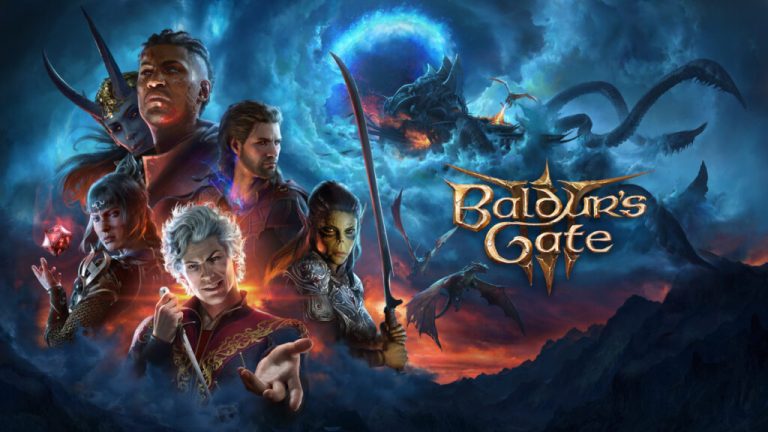This is a guide which shows how to play the Baldur’s Gate video games in order.
Table of Contents
Release Order
- Baldur’s Gate (1998)
- Baldur’s Gate: Tales of the Sword Coast (1999)
- Baldur’s Gate II: Shadows of Amn (2000)
- Baldur’s Gate II: Throne of Bhaal (2001)
- Baldur’s Gate: Siege of Dragonspear (2016)
- Baldur’s Gate III (2023)
Chronological Order
- Baldur’s Gate (1998)
- Baldur’s Gate: Tales of the Sword Coast (1999)
- Baldur’s Gate: Siege of Dragonspear (2016)
- Baldur’s Gate II: Shadows of Amn (2000)
- Baldur’s Gate II: Throne of Bhaal (2001)
- Baldur’s Gate III (2023)
Game Descriptions
Baldur’s Gate (1998)
Start your journey with the original Baldur’s Gate.
Released in 1998, this game set a new standard for computer role-playing games with an intricate plot, a richly developed world, and a strict adherence to Advanced Dungeons & Dragons 2nd edition rules.
Baldur’s Gate: Tales of the Sword Coast (1999)
After completing the main game, you can proceed to playing Tales of the Sword Coast, an expansion pack that offers additional quests, areas to explore, and enhancements to the game mechanics.
Baldur’s Gate II: Shadows of Amn (2000)
Moving forward, Baldur’s Gate II: Shadows of Amn expands upon its predecessor’s formula with a more expansive story, deeper character customization, and enhanced mechanics.
It is the second main game in the Baldur’s Gate series.
Baldur’s Gate II: Throne of Bhaal (2001)
Throne of Bhaal is the conclusion to the Baldur’s Gate II saga, serving as an expansion that wraps up the Bhaalspawn storyline.
Baldur’s Gate: Siege of Dragonspear (2016)
Siege of Dragonspear acts as an interquel, bridging the gap between Baldur’s Gate and Baldur’s Gate II.
Baldur’s Gate III (2023)
Baldur’s Gate III is a role-playing video game developed and published by Larian Studios, the same company which produces the popular Divinity: Original Sin series.
It is the third main game in the Baldur’s Gate series.

